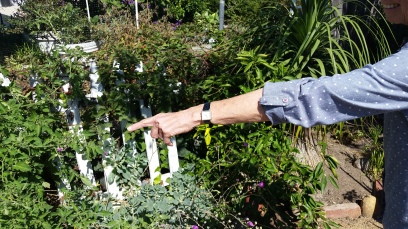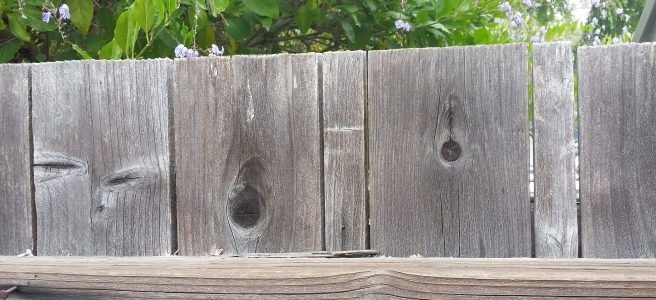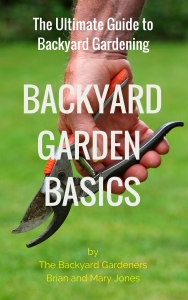The advantage of gardening with one finger is that it requires very little effort on the part of the person with the finger. My wife happens to have a master’s degree in gardening with one finger. It usually starts with a seemingly simple declaration such as: “Would you look at those weeds.” The key part of this statement is that it’s attached to a pointing finger.

Other seemingly innocuous such statements might be: “There’s mildew on the roses”, “That bush is getting awfully tall”, “What’s been eating the tomatoes?” Each of these comments is accompanied by a pointing finger.

Although this may seem like normal garden conversation my antennae immediately goes up and I hear the following:
“Those weeds aren’t going to pull themselves.”
“Sharpen the hedge clippers and grab the ladder.”
“The neighbor’s roses don’t have mildew.”
“I prefer that my tomatoes don’t have bite marks.”
To my ears all of these finger pointing remarks require some action on my part. It’s time to pull weeds that I swear I just pulled last week, time to trim the overzealous bushes, time to spray those “big baby” roses, time to find that scary looking hornworm on the tomatoes.
Another prime example of planting with one finger is shrub lugging. This is how it works. Your spouse points to a spot and you lug the shrub to that spot. She shakes her head and points to another spot and you lug the shrub to that spot. This can go on for hours depending on the size of your yard. Shrub lugging is a time honored tradition that inevitably leads to digging a hole in the very spot that a giant boulder is buried.
Furniture lugging is similar to shrub lugging only indoors. The big difference is that I’m often not required to be involved in furniture lugging. My wife can wake up at 3 in the morning and think to herself; that sofa needs to be perpendicular to the wall and the red cabinet would look much better next to the fireplace. Sometime during the day, my delicate wife, will have lugged big, heavy furniture that normally would require large husky men with moving equipment and place it in an entirely new configuration.
To be fair my wife works just as hard as I do in the garden. She’s able to do her share of the work and still have energy to finger point out my work. Some days I do have to tell her, “Please no finger pointing today, all of this gardening with one finger is wearing me out.”
Mary and Brian are backyard gardeners who like to share their passion for all things gardening.
Visit them at TheBackyardGardeners.
Our first garden book. “Backyard Garden Basics” is now available at Amazon! Over 3,500 downloads! Click this link to check it out!
Please leave a comment below right now.
Also, we would love it if you would consider sharing this blog post with your community if you thought it was helpful to you. If you do, we really appreciate it.















 yard, it can even be the front yard. A backyard garden is your own personal plot of land. It’s your palette to paint with rocks and bricks, vegetables and flowers. It’s said that the sculptor Michelangelo could look at a block of marble and see the form held inside.
yard, it can even be the front yard. A backyard garden is your own personal plot of land. It’s your palette to paint with rocks and bricks, vegetables and flowers. It’s said that the sculptor Michelangelo could look at a block of marble and see the form held inside.
